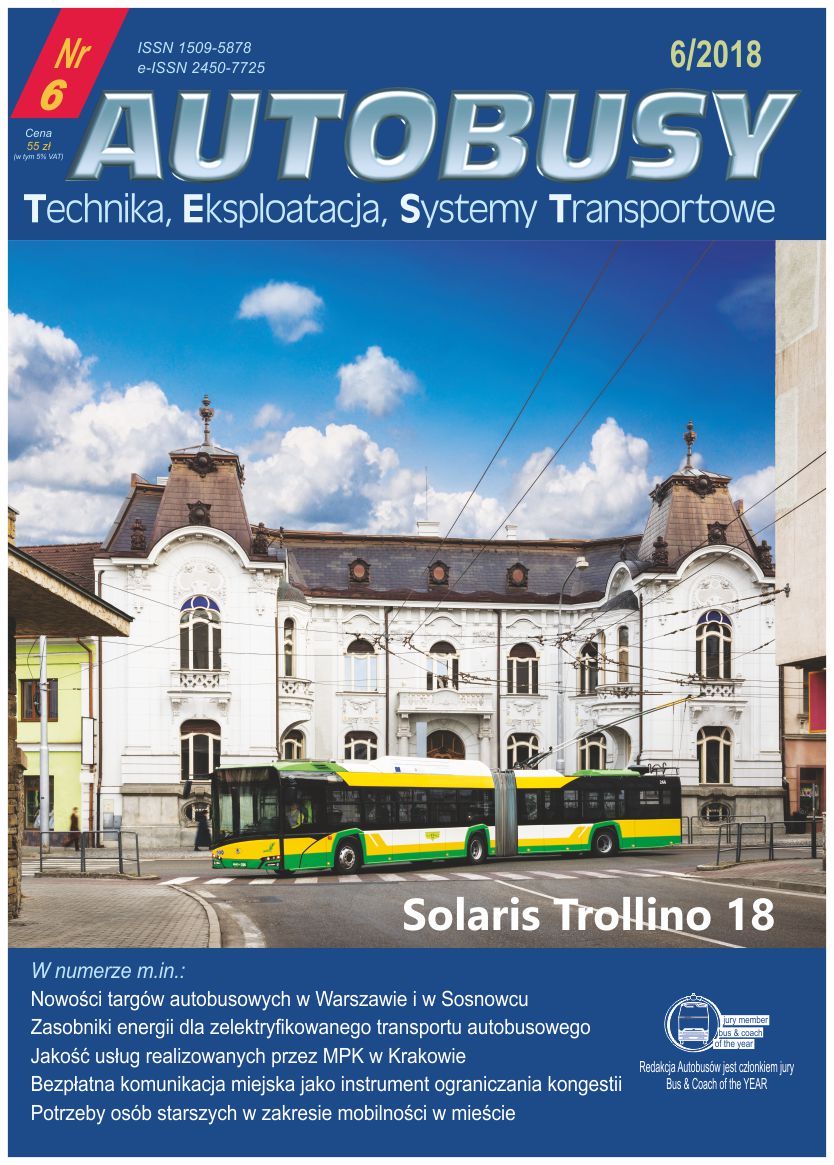Influence of climatic ageing on acrylic coatings adhesion
DOI:
https://doi.org/10.24136/atest.2018.124Keywords:
acrylic coating, climatic aging, aging agents, coating adhesionAbstract
Investigations were carried out of climatic ageing influence on acrylic coatings adhesion to the steel substrate. Obtained results showed that ageing factors action for two years contributed to the decrease of coatings adhesion to steel substrate. Pull-off adhesion strength (examined according to PN-EN ISO 4624:2016-05) was 8 MPa in the case of unaged coating whereas, in the case of coating aged climatically, decreased to 4,3 MPa. Evaluation of unaged coating state after pull-off test revealed adhesive break between the bond layer and the acrylic coating surface on the whole area of the stamp surface. However, in the case of the climatically aged coating, the cohesive break occurred in the primer layer on the 95% area of stamp surface and the cohesive break between the bond layer and the coating surface on the 5% area of the stamp surface.
Downloads
References
Bauer F., Decker U., Czihal K., Mehnert R., Riedel C., Riemschneider M., Schubert R., Buchmeiser M. R., UV curing and matting of acrylate nanocomposite coatings by 172 nm excimer irradiation, “Progress in Organic Coatings”, volume 64, issue 4, March 2009, p. 474÷481.
Bauer F., Decker U., Naumov S., Riedel C., Photoinitiator-free UV curing and matting of acrylate-based nanocomposite coatings: Part 3, “Progress in Organic Coatings”, Volume 77, Issue 6, June 2014, p. 1085÷1094.
Fedorov A.V., Tijum R., Vellinga W.-P., Hosson J.Th.M., Degradation and recovery of adhesion properties of deformed metal–polymer interfaces studied by laser induced delamination. Progress in Organic Coatings 2007, vol. 58, p. 180÷186.
Fu S.-Y., Feng X.-Q., Lauke B., Mai Y.-W., Effects of particle size, particle matrix interface adhesion and particle loading on mechanical properties. Composites 2008, Part B 39, p. 933÷961.
Khun N.W., Rincon Troconis B.C., Frankel G.S.: Effects of carbon nanotube content on adhesion strength and wearand corrosion resistance of epoxy composite coatings on AA2024-T3. Progress in Organic Coatings 2011, vol. 74, p. 192÷203.
Kotlík P., Doubravová K., Horálek J., Kubáč L., Akrma J., Acrylic copolymer coatings for protection against UV rays, “Journal of Cultural Heritage “2014, vol. 15, p. 44÷48.
Kotnarowska D., Influence of ultraviolet radiation and aggressive media on epoxy coating degradation, “Progress in Organic Coatings 1999”, vol. 37, p. 149÷159.
Kotnarowska D., Influence of Ultraviolet Radiation on Erosive Resistance of Modified Epoxy Coatings. “Solid State Phenomena” 2006, vol. 113 (Mechatronic Systems and Materials), p. 585÷588.
Kotnarowska D., Epoxy coating destruction as a result of sulphuric acid aqueous solution action, “Progress in Organic Coatings” 2010, vol. 67, p. 324÷328.
Kotnarowska D., Destrukcja powłok polimerowych pod wpływem czynników eksploatacyjnych. Wydawnictwo Uniwersytetu Technologiczno-Humanistycznego w Radomiu, Radom 2013.
Kotnarowska D.: Destruction of Epoxy Coatings Under the Influence of Climatic Factors. Solid State Phenomena 2013, Pt. B of Diffusion and Defect Data - Solid State Data, vol. 199, p. 581÷586.
Kotnarowska D., Bryła N., Stanisławek D., Wpływ starzenia klimatycznego na stan powierzchni nanopowłok epoksydowych, „Autobusy” 2016 nr 12, s. 1058÷1062 (CD).
Kotnarowska D., Sirak M., Ocena wpływu starzenia promieniowaniem UV na destrukcję ochronno- dekoracyjnych powłok nadwozi samochodowych. Autobusy 2016 nr 12, s. 1063÷1068 (płyta CD).
Kotnarowska D., Witek N., Wpływ oddziaływania czynników środowiska na starzenie nanopowłok epoksydowych, „Autobusy” 2017 nr 12, s. 983÷987 (CD).
Narisava I., Resistance of polymer materials, Ed. Chemistry, Moscow 1987 (in Russian).
Negel O., Funke W., Internal stress and wet adhesion of organic coatings. Progress in Organic Coatings 1996, vol. 28, p. 285÷289.
Soer W.J., Ming W., Koning C.E., Benthem R.A.T.M., Mol J.M.C., Terryn H., Barrier and adhesion properties of anti-corrosion coatings based on surfactant-free latexes from anhydride-containing polymers. Progress in Organic Coatings 2009, vol. 65, p. 94÷103.
Vayeda R., Wang J., Adhesion of coatings to sheet metal under plastic deformation. International Journal of Adhesion & Adhesives 2007, vol. 27, p. 480÷492.
Zubielewicz M., Królikowska A., The influence of ageing of epoxy coatings on adhesion of polyurethane topcoats and protective properties of coating systems. Progress in Organic Coatings 2009, vol. 66, p. 129÷136.
Zyska B., Żakowska Z., Mikrobiologia materiałów. Wydawnictwo Politechniki Łódzkiej, Łódź 2005.
Żenkiewicz M., Adhezja i modyfikowanie warstwy wierzchniej tworzyw wielkocząsteczkowych, WNT, Warszawa 2000



